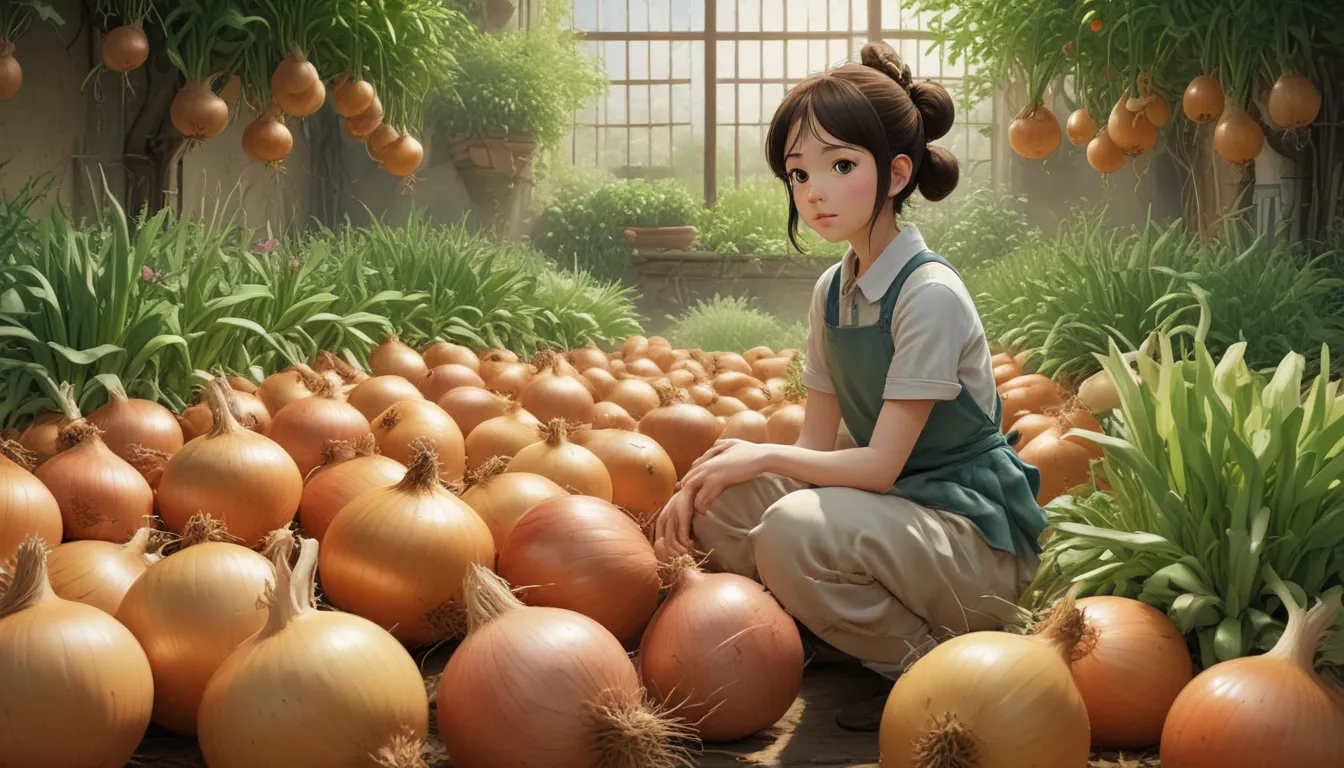Growing Onions: A Comprehensive Guide for Home Gardeners

Onions are a kitchen staple that adds flavor to countless dishes. But have you ever considered growing your own onions? The satisfaction of harvesting your own fresh produce is unmatched, and the flavor of home-grown onions is unbeatable. In this detailed guide, we’ll cover everything you need to know to successfully plant and grow onions in your garden.
Why Grow Onions?
While it is convenient to buy onions from the grocery store, growing your own offers a host of benefits:
- Enjoy unique varieties not commonly found in stores.
- Save money in the long run.
- Experience the joy of harvesting your own produce.
- Control the growing process and ensure chemical-free onions.
By growing your own onions, you can explore an array of options and truly appreciate the flavors and varieties available.
Cultivation and History
Onions have been a global staple for centuries, with origins likely in Central Asia. Cultivated since the Bronze Age, onions have a rich history and have been utilized in various cultures for culinary and medicinal purposes.
Onions are classified as biennial or perennial plants, with various types such as shallots, multiplier onions, and Egyptian walking onions. Understanding the different varieties allows you to choose the best type for your garden.
Propagation Methods
There are several methods to propagate onions, including:
From Seed
- Ideal for regions with consecutive growing seasons.
- Start seeds indoors to bypass harsh winters.
- Choose a well-draining seed starting mix for optimal results.
From Transplants or Sets
- Great for gardeners seeking quicker yields.
- Ensure proper spacing and planting depth for successful growth.
- Consider using onion sets for efficient planting.
Understanding the various propagation methods helps you choose the most suitable option based on your gardening needs.
How to Grow Onions
Growing onions requires attention to soil quality, watering, and feeding:
- Plant in well-draining, loamy soil with a pH between 6.0 and 7.0.
- Ensure consistent watering to prevent dry spells that impact bulb development.
- Feed onions three times during the growing season with a balanced fertilizer.
By following these growing practices, you can nurture healthy onion plants and encourage optimal bulb development.
Onion Cultivars to Select
Choosing the right onion cultivar is crucial for successful growth:
- Consider your location and daylight hours to select long-day, short-day, or intermediate types.
- Explore popular cultivars like ‘Dakota Tears’, ‘Red Baron’, and ‘Walla Walla’ for unique flavors and characteristics.
Selecting the best cultivar based on your region ensures a productive onion harvest tailored to your preferences.
Managing Pests and Disease
Protecting onions from pests and diseases is essential for a successful harvest:
Insects
- Combat pests like allium leaf miners, onion maggots, and thrips to prevent damage.
- Use preventive measures and treatments to safeguard plants from infestations.
Disease
- Monitor common diseases like bacterial rot, basal rot, and black mold for early detection.
- Implement proper hygiene, crop rotation, and treatment methods to prevent disease outbreaks.
Addressing pest and disease issues promptly ensures healthy onion plants and a bountiful harvest.
Harvesting and Storing Onions
Knowing when and how to harvest onions is key to preserving their quality:
- Harvest storage onions when the tops begin to turn yellow and fall over.
- Cure onions in a dry, well-ventilated area to enhance storage life.
- Store spring onions in the refrigerator for extended freshness.
Proper harvesting and storage techniques preserve the flavor and quality of home-grown onions for longer periods.
Recipes and Cooking Ideas
Get creative with your home-grown onions and try new recipes:
- Explore caramelizing onions for added depth of flavor in various dishes.
- Incorporate onions in salads, soups, stir-fries, and other culinary creations for a burst of flavor.
- Experiment with different onion varieties to enhance your cooking repertoire.
Unlock the versatility of onions in cooking and discover new ways to elevate your dishes with fresh, home-grown produce.
In Conclusion
Growing onions at home is a rewarding experience that offers numerous benefits. By understanding the cultivation process, selecting the right cultivar, and managing pests and diseases effectively, you can enjoy a successful harvest of flavorful onions. Experiment with different recipes and cooking ideas to make the most of your home-grown produce. Embrace the joy of gardening and savor the unparalleled taste of fresh, home-grown onions in your meals. Happy growing!





